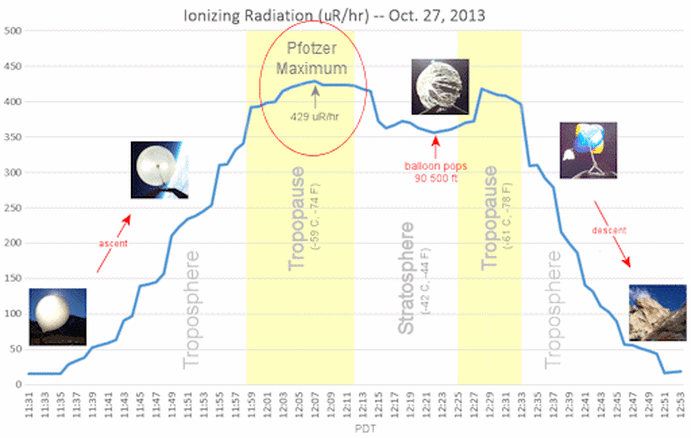When cosmic rays crash into Earth's atmosphere, they produce a spray of secondary particles. With increasing depth in the atmosphere, the primary cosmic radiation component decreases, whereas the secondary radiation component increases. This complex situation results in a maximum of the dose rate at an altitude of ~20 km, the so-called "Pfotzer maximum," named after physicist George Pfotzer who discovered the peak using balloons and Geiger tubes in the 1930s.
The Earth to Sky experiment was prompted by a recent NASA report concerning the effects of space weather on aviation. Like astronauts, ordinary air travelers can be exposed to significant doses of radiation when the sun is active. Data collected by balloon-borne sensors can be used to check and improve research models of radiation percolating through Earth's atmosphere.
The students are ready to fly their sensors again. A radiation storm in the week ahead is a possibility as solar activity remains high. If one erupts, they plan to revisit the Pfotzer Maximum to find out how it reacts. Stay tuned. www.spaceweather.com

 RSS Feed
RSS Feed